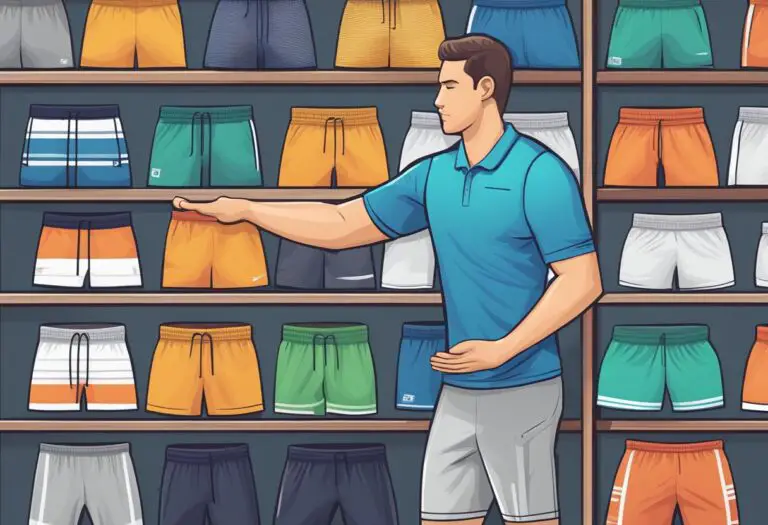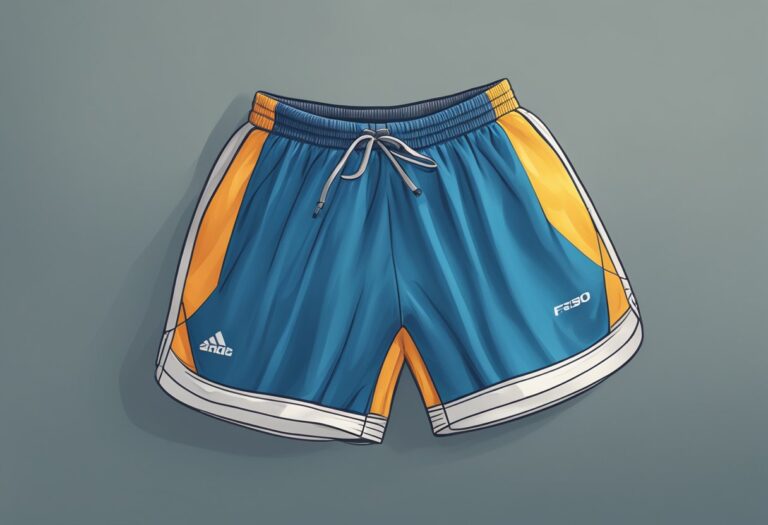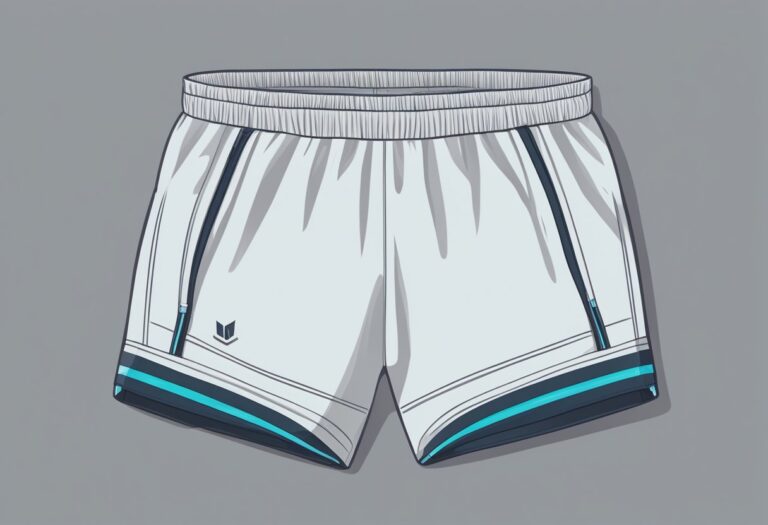How can I choose the right running shorts for my body type and running style
How to Choose the Right Running Shorts for Your Body Type and Running Style
When it comes to running, choosing the right pair of shorts can make all the difference in comfort and performance. With so many options available, it can be overwhelming to determine which style is best suited for your body type and running style. However, taking the time to consider the key factors can help you find the perfect pair of running shorts.

First and foremost, it’s important to consider your body type. Different styles of shorts will fit and feel differently depending on your shape. For example, if you have a larger bottom, you may want to look for shorts with a wider waistband or a longer inseam to prevent chafing. On the other hand, if you have a smaller frame, shorts with a shorter inseam may be more comfortable and flattering. By considering your body type, you can narrow down your options and find shorts that will fit and feel great.
Understanding Body Types

Identifying Your Body Shape
Before choosing the right running shorts for your body type, it’s important to identify your body shape. There are generally four body shapes: apple, pear, hourglass, and rectangle.
An apple-shaped body has a larger upper body and narrower hips and thighs. A pear-shaped body has a larger lower body and narrower shoulders and upper body. An hourglass-shaped body has a balanced upper and lower body with a defined waist. A rectangle-shaped body has a straighter figure with little waist definition.
Body Type Considerations for Shorts
Once you know your body shape, you can consider what type of running shorts will work best for you. Here are some things to keep in mind:
- Apple-shaped bodies may want to choose shorts with a wider waistband to prevent them from slipping down. Look for shorts with a drawstring or a high-rise waistband for added support.
- Pear-shaped bodies may want to choose shorts with a longer inseam to provide more coverage for their thighs. Look for shorts with a compression fit to help smooth out any lumps or bumps.
- Hourglass-shaped bodies can generally wear any type of running shorts, but may want to choose shorts with a mid-rise waistband to accentuate their waist.
- Rectangle-shaped bodies may want to choose shorts with a curved hemline to create the illusion of curves. Look for shorts with a shorter inseam to show off your legs.
In addition to body shape, consider your running style when choosing running shorts. If you’re a long-distance runner, you may want to choose shorts with moisture-wicking fabric to keep you cool and dry. If you’re a trail runner, you may want to choose shorts with pockets to carry essentials like energy gels or a phone.
By understanding your body shape and running style, you can choose the right running shorts that will not only look great but also perform well during your runs.
Running Styles and Short Types

Running Style Analysis
When it comes to running, everyone has their own unique style. Some runners prefer long, steady runs, while others prefer shorter, faster sprints. Some runners like to run on trails, while others prefer pavement. It’s important to consider your running style when choosing the right running shorts.
For example, if you’re a long-distance runner, you may want to choose shorts that have a looser fit to allow for more airflow and prevent chafing. If you’re a sprinter, you may want to choose shorts that are more form-fitting to reduce drag and improve your speed.
Matching Shorts to Running Style
Once you’ve analyzed your running style, you can start looking for shorts that match your needs. Here are some tips to help you choose the right shorts for your running style:
- Long-Distance Running: Look for shorts that have a looser fit and are made from lightweight, breathable material. Consider shorts with a built-in liner to prevent chafing.
- Sprinting: Look for shorts that are more form-fitting and made from lightweight, moisture-wicking material. Consider shorts with a shorter inseam to reduce drag.
- Trail Running: Look for shorts that have a tighter fit to prevent snagging on branches and other obstacles. Consider shorts with a longer inseam to provide more coverage and protection.
- Pavement Running: Look for shorts that have a looser fit and are made from moisture-wicking material to keep you cool and dry. Consider shorts with reflective detailing for increased visibility in low-light conditions.
By considering your running style and matching it to the right type of shorts, you can ensure that you’re comfortable and performing at your best during your runs.
Shorts Features and Materials
When it comes to choosing the right running shorts, one of the most important factors to consider is the features and materials of the shorts. This section will discuss some of the key features and materials to look for when selecting running shorts.
Material Technologies
The material of your running shorts can have a significant impact on your comfort and performance. Some of the most popular materials used for running shorts include:
- Polyester: Polyester is a popular choice for running shorts because it is lightweight, breathable, and quick-drying. It also has moisture-wicking properties that help keep you dry and comfortable during your run.
- Nylon: Nylon is another common material used for running shorts. It is lightweight, durable, and has moisture-wicking properties that help keep you dry.
- Spandex: Spandex is a stretchy material that is often used in combination with other materials to provide a comfortable and supportive fit. It is particularly useful for runners who prefer a tighter fit.
- Mesh: Mesh is a breathable material that is often used in the lining of running shorts. It helps to increase ventilation and keep you cool during your run.
Comfort and Performance Features
In addition to the material, there are several other features that can impact the comfort and performance of your running shorts. Some of these features include:
- Moisture-wicking: Moisture-wicking technology is designed to pull sweat away from your skin and keep you dry. This can help prevent chafing and irritation, as well as regulate your body temperature.
- Pockets: Pockets are a useful feature for runners who want to carry their phone, keys, or other small items with them. Look for shorts with secure pockets that won’t bounce around during your run.
- Reflective details: If you plan on running in low-light conditions, look for shorts with reflective details that will make you more visible to drivers and other runners.
- Adjustable waistband: An adjustable waistband can help you achieve a comfortable and secure fit. Look for shorts with a drawstring or elastic waistband that you can adjust to your liking.
By considering the features and materials of your running shorts, you can choose a pair that will provide you with the comfort and performance you need to achieve your running goals.
Fit and Comfort

Sizing and Fit Tips
Choosing the right size and fit for running shorts is crucial for comfort and performance. It’s essential to find shorts that fit snugly without being too tight or too loose. When selecting running shorts, it’s important to consider the following factors:
- Waistband: Look for shorts with an elastic waistband that fits snugly but not too tight. Avoid shorts with drawstrings that can irritate your skin or cause discomfort.
- Length: The length of your shorts should be determined by your body type and personal preference. If you have long legs, you may prefer longer shorts that offer more coverage. If you have shorter legs, shorter shorts may be more comfortable.
- Inseam: The inseam length is the distance from the crotch to the bottom of the shorts. It’s important to choose shorts with the right inseam length to prevent chafing and discomfort. Longer inseams may be more comfortable for runners with thicker thighs.
- Fabric: Look for shorts made from lightweight, breathable fabric that wicks away sweat and moisture. Avoid shorts made from heavy or thick materials that can cause discomfort and chafing.
Comfort Enhancements
In addition to finding the right size and fit, there are several comfort enhancements that can make running shorts more comfortable and supportive. Some of these enhancements include:
- Liners: Many running shorts come with built-in liners that provide additional support and prevent chafing. Look for shorts with liners made from breathable, moisture-wicking fabric.
- Pockets: If you like to carry your phone, keys, or other essentials while running, look for shorts with pockets. Some shorts have pockets built into the waistband or on the sides of the shorts.
- Anti-chafing technology: Look for shorts with anti-chafing technology, such as flatlock seams or seamless construction, to prevent irritation and discomfort.
- Compression: Compression shorts can provide additional support and improve blood flow during exercise. If you have muscle soreness or fatigue, compression shorts may be a good option.
By considering these factors and enhancements, runners can find the right running shorts that fit their body type and running style, ensuring maximum comfort and performance.
Selecting the Right Brand and Model

When it comes to choosing the right running shorts, selecting the right brand and model is crucial. There are many brands and models available in the market, each with their own unique features and benefits. Here are some factors to consider when selecting the right brand and model for your body type and running style.
Brand Reputation and Reviews
One important factor to consider when selecting running shorts is the brand reputation and reviews. It is important to choose a brand that is known for producing high-quality running shorts that are durable, comfortable, and functional. Some popular brands in the market include Nike, Adidas, Under Armour, and Brooks.
Reading reviews from other runners can also be helpful in selecting the right brand and model. Reviews can provide valuable insights into the fit, comfort, and performance of the running shorts. It is important to read reviews from a variety of sources to get a well-rounded understanding of the product.
Model Variations and Innovations
Another factor to consider when selecting running shorts is the model variations and innovations. Different models of running shorts are designed for different types of runners and running styles. For example, some models are designed for long-distance runners, while others are designed for sprinters.
It is important to consider your running style and needs when selecting a model of running shorts. Some models may have features such as moisture-wicking fabric, built-in compression shorts, or reflective detailing for night-time running.
In addition, some brands are constantly innovating and introducing new features and technologies in their running shorts. It is important to stay up-to-date with these innovations and consider them when selecting a model of running shorts.
By considering brand reputation, reviews, model variations, and innovations, runners can select the right brand and model of running shorts for their body type and running style.







